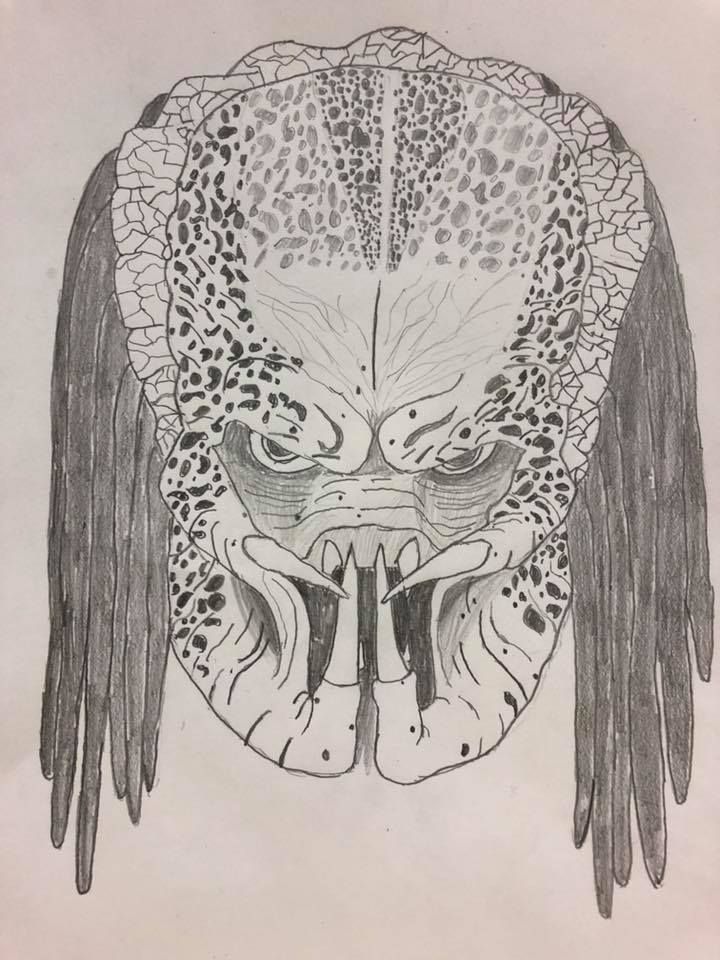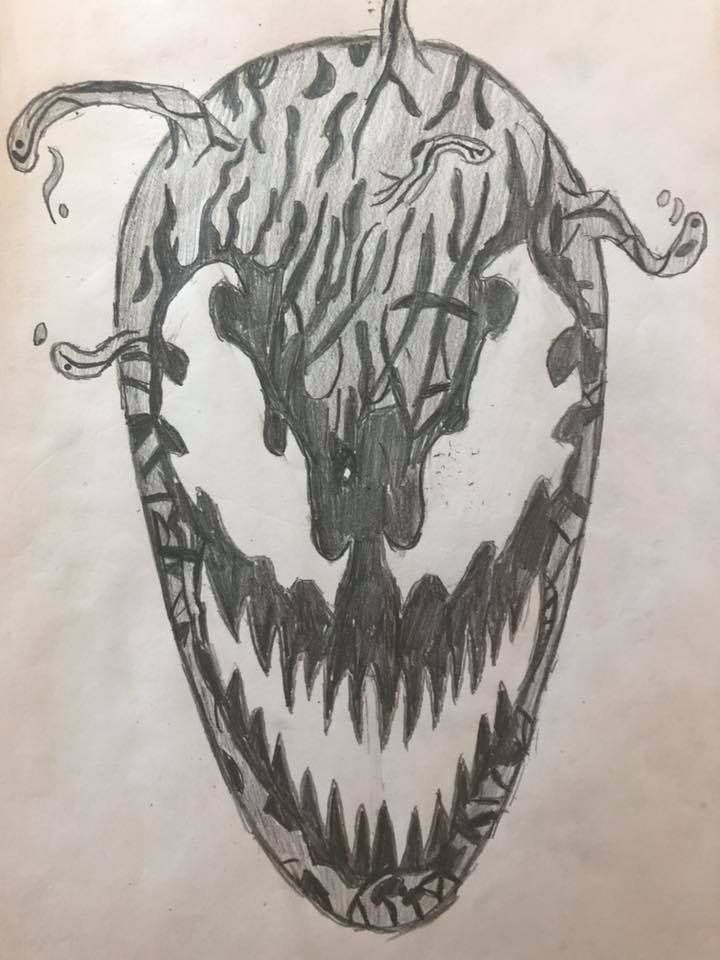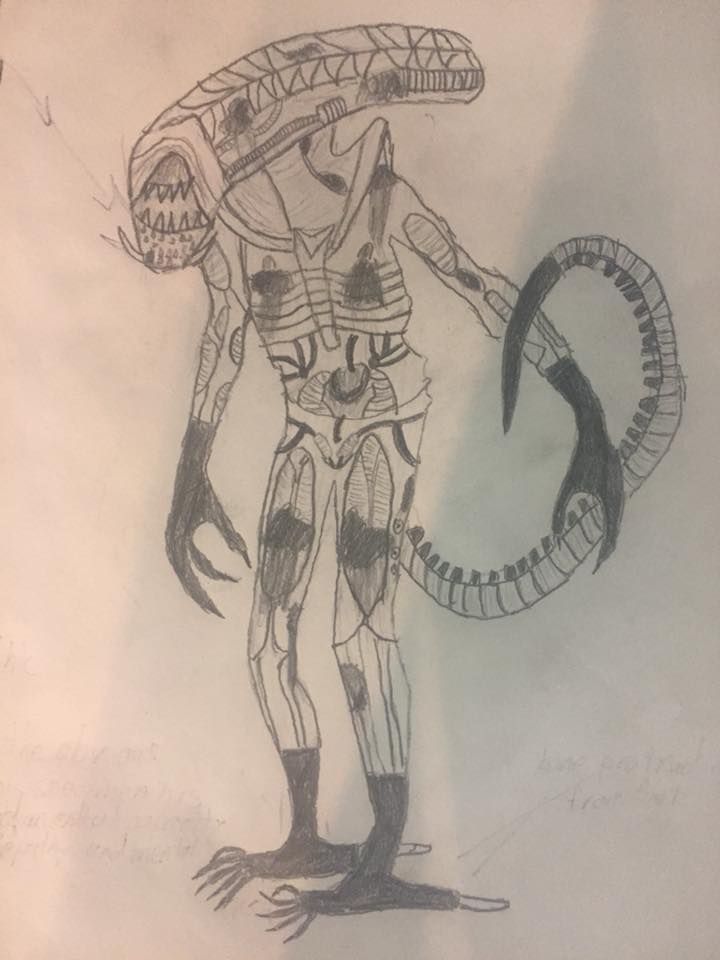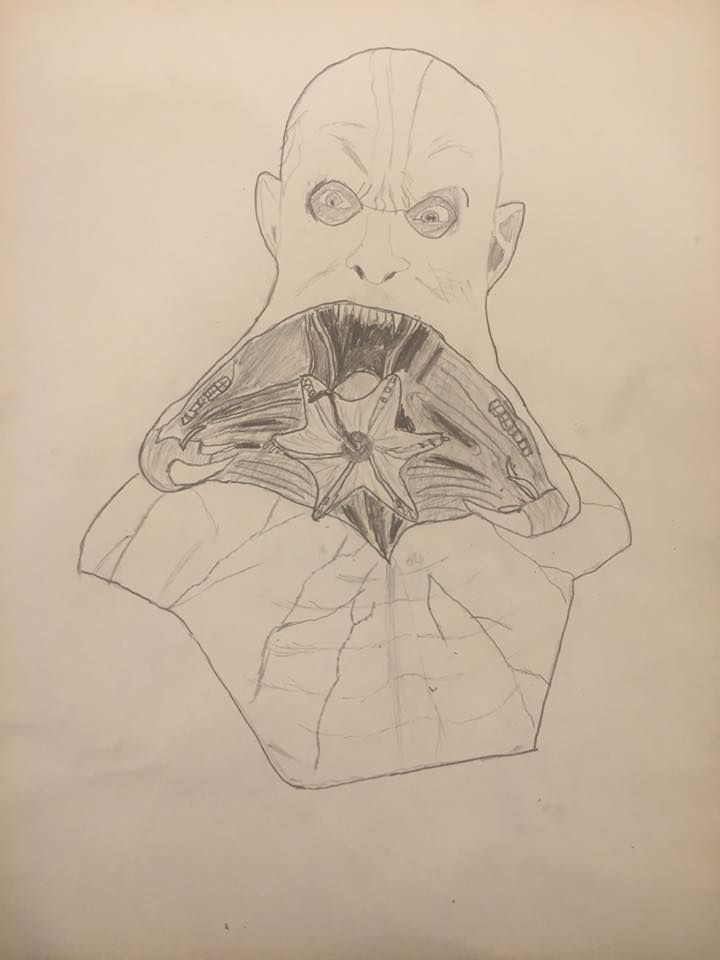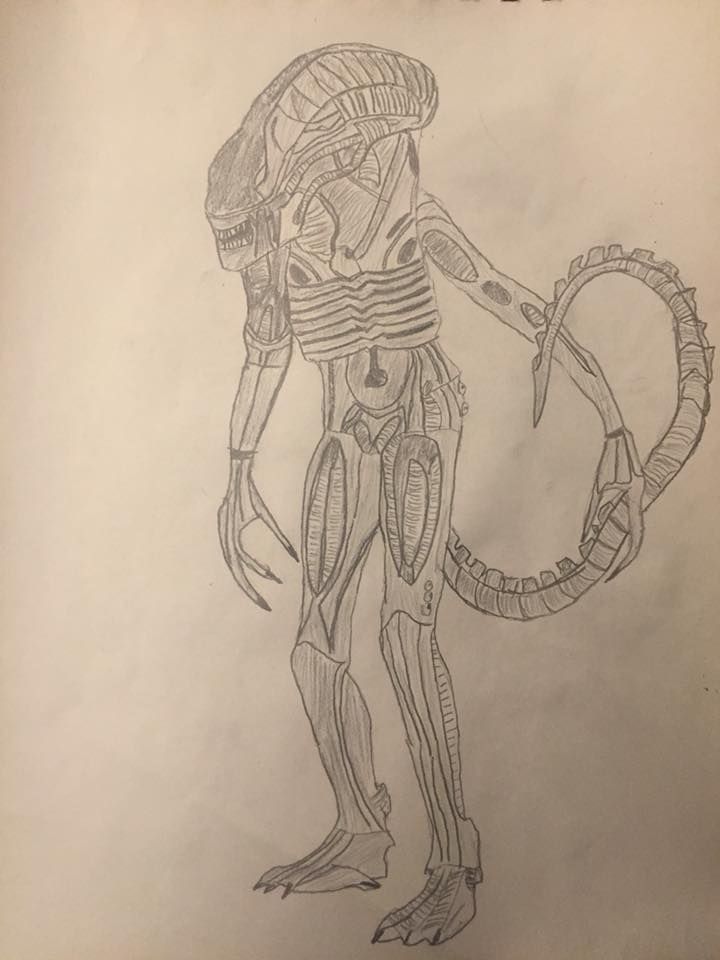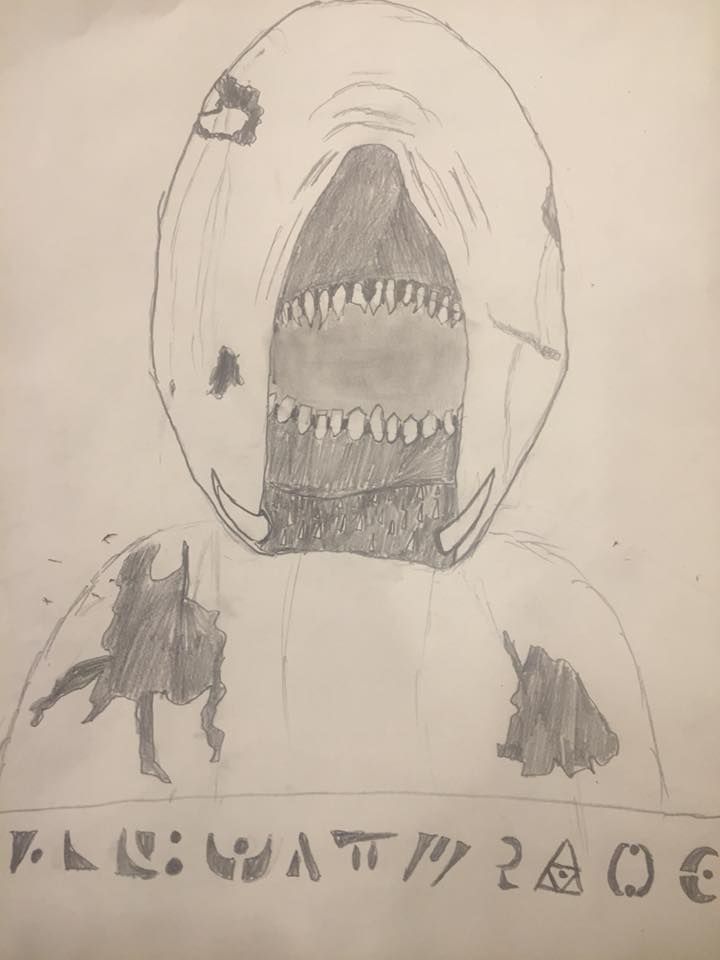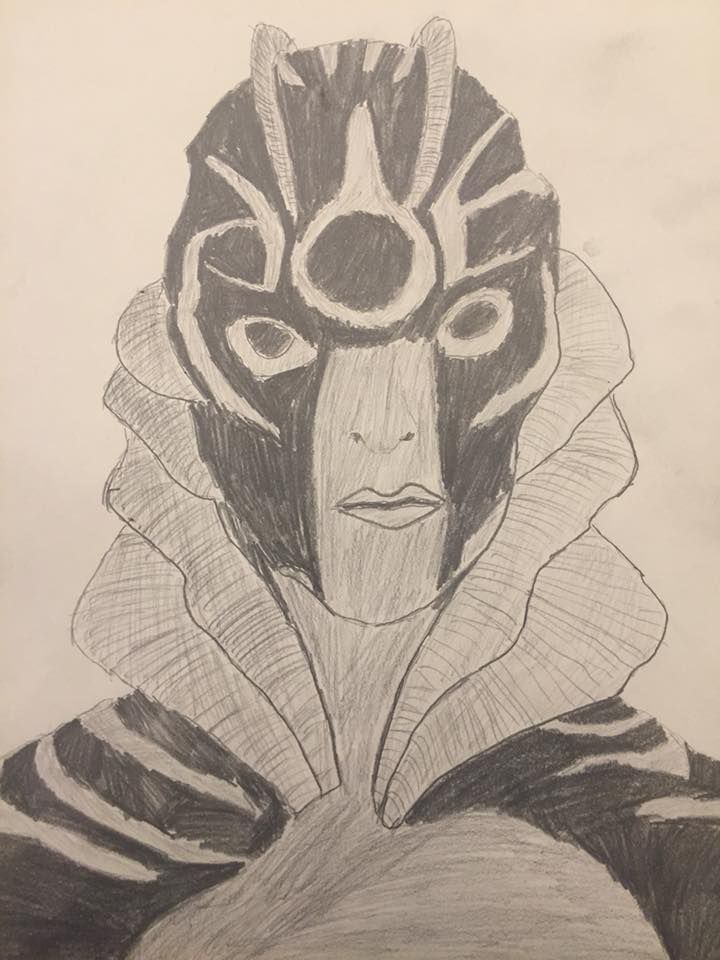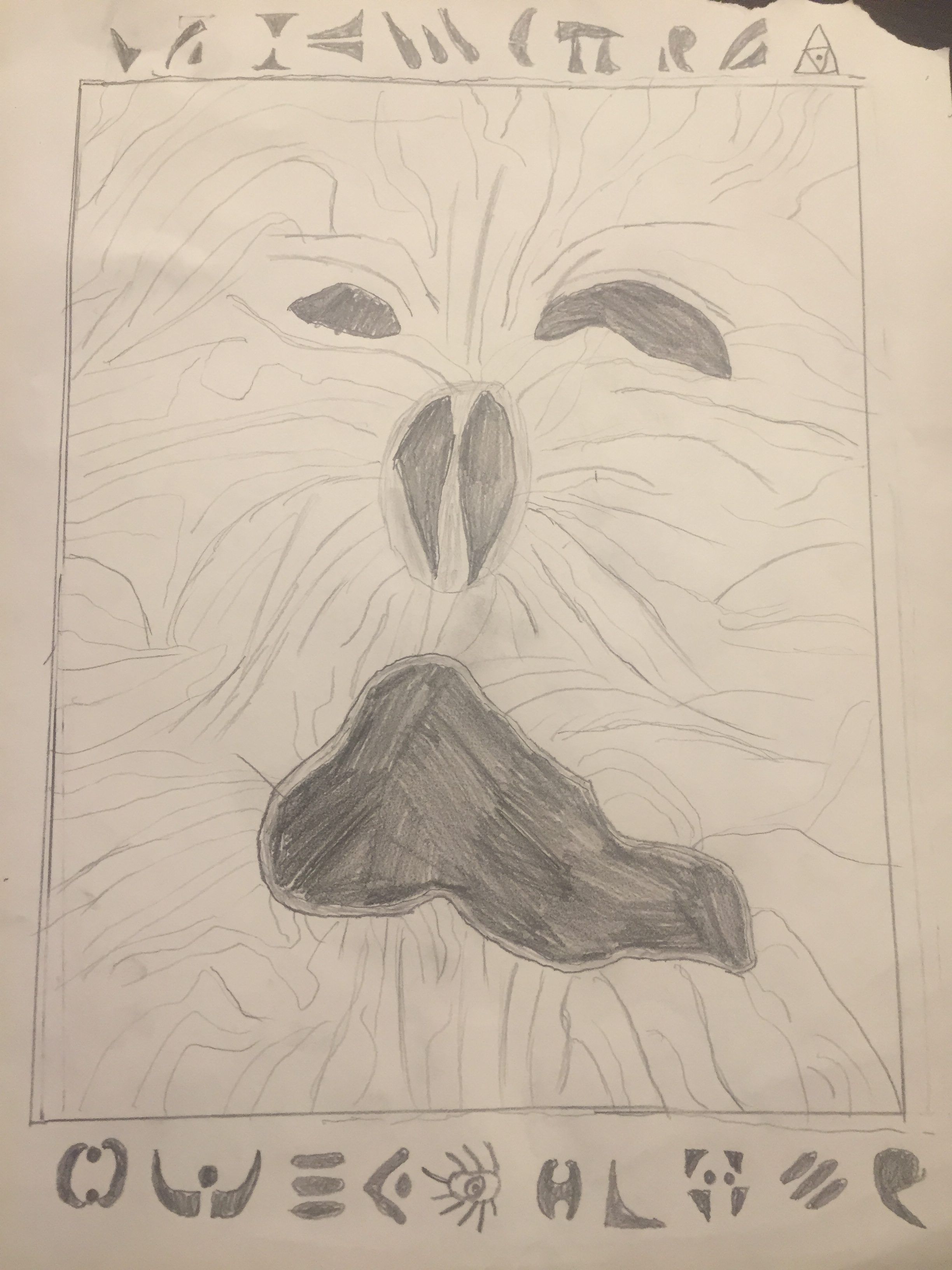![]() “Well, the first thing is that I love monsters. I identify with monsters.”
“Well, the first thing is that I love monsters. I identify with monsters.”
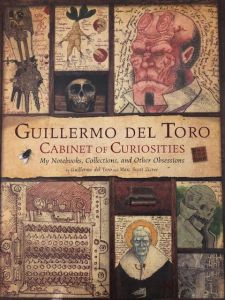
When I first heard that quote from my idol, writer and director Guillermo Del Toro, it was as if my mind had completely opened. It triggered a new series of ideas that helped strengthen a concept that has stuck with me for my entire life: my love and fascination for monsters.
Monster in the making?
Ever since I was a little boy, I was always a fan of the monsters and bad guys of many fantasy films I watched. Especially Disney and “Star Wars” films. Whenever people asked me why, I would always say “they look so cool.”
As I grew older and got the courage to start watching horror films such as “Alien” and “Predator,” I felt my love and fascination for monsters grow stronger. I began to appreciate other aspects of the monsters I saw on screen such as designs and traits. So much so that I sought to become more like them such as dressing up as them for Halloween and acting like them for fun.
Some people became concerned about my love of monsters, however, as they believed that it would corrupt me and turn me into one later on. I could understand where they were coming from, but some took it to extreme lengths and manipulated certain details for personal gain. They made me feel like I couldn’t be myself around anyone and no one would accept me just because I had different views on monsters.
Becoming a monster has been my greatest fear for the longest time and I always debated whether my appreciation for them would lead to that fear becoming a reality. While I strongly disagree with their methods, I have grown to appreciate and sympathize with villains and monsters by understanding their motives, beliefs and backstories such as The Phantom of the Opera, David from “Alien: Covenant” and so much more. It wasn’t until early 2018 when my views on monsters became fully realized.
A fresh perspective
It all started when I saw Guillermo Del Toro’s “The Shape of Water” in theaters; it is a beautiful tale involving a mute woman and a humanoid amphibian creature falling in love. I was blown away with how breathtaking the story, characters, themes and romance were, but I was especially fascinated with the Amphibian Man. The design and thought process in creating it was absolutely incredible and it had me eager to learn more about Del Toro.
I heard from a variety of people on the internet that Del Toro was famous for designing a lot of popular monsters and creating some of the best fantasy films of our time so I decided to start watching his films. One day, in March 2018, I decided to watch what many considered to be Del Toro’s best film, “Pan’s Labyrinth.”
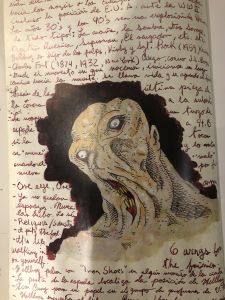
Once again, Del Toro never ceased to amaze me. The film’s story, characters, creature design and overall themes had me aching for more. I became so obsessed with Del Toro’s work that I began watching the rest of his films and I always left my computer screen feeling amazed and inspired.
Del Toro’s understanding of monsters was beyond any I had ever seen and it had me curious as to what fueled his passion and love for them. I did some research online and found a quote from him that changed my life forever.
“In fairy tales, monsters exist to be a manifestation of something that we need to understand, not only a problem we need to overcome, but also, they need to represent, much like angels represent the beautiful, pure, eternal side of the human spirit, monsters need to represent a more tangible, more mortal side of being human…. they are an essential part of the fable.”
It was as if I had discovered the meaning of life. Everything about my love of monsters and desire to act like them finally made sense. One of the answers I had been searching for my entire life was finally found.
What Del Toro means is that all monsters represent the darker sides of what makes us human: aging, decay, hunger, gluttony, sexual desires, rage, anger, darkness, desperation and many more. Del Toro demonstrates that perfectly with one of his most famous monsters, the Pale Man.
We’re all like them
The Pale Man is, as the name implies, a pale humanoid creature who sits at a large banquet table in his lair covered with delicious food. However, the creature is blind and can only see with eyes that he puts into the palms of his hands. He also has flabby skin which suggests he used to be very large. On top of all that, he has an unquenchable lust for blood as he has eaten many children as showcased by paintings of him killing children on the ceiling and a large pile of children’s shoes in a corner of the room.
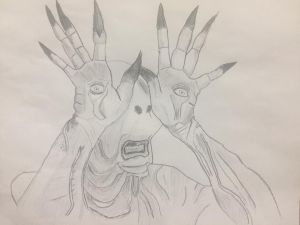
These characteristics showcase a strong sense of gluttony and greed as the Pale Man attacks anyone who dares take from his feast, has no regard for innocent lives and will stop at nothing to satisfy his unquenchable appetite. This monster is the perfect representation of “Pan’s Labyrinth’s” main villain Captain Vidal.
A ruthless and sadistic captain of Francoist Spain, Vidal feasts on the blood of the innocent without regret or remorse. He hogs all the food for himself, cuts other people’s rations to hurt the local rebels, kills two innocent farmers, eats the food that proves their innocence and at the end of the film, murders an innocent little girl.
This happens to be a trope in a lot of Del Toro’s films. The real villains of his films are beings that are obsessed with perfection and order, humans chief among them. As a result, the monsters in his films are ones that we can sympathize with and understand even though their methods are extreme.
In “Blade II,” the film’s antagonist, Jared Nomak, was genetically engineered by his father, Damaskinos, to be the perfect vampire through a virus that would make him immune to all vampire weaknesses. When that ended in disaster, Damaskinos discarded Nomak as a “mistake” and manipulated Blade and several other vampires into killing him. Thus, Nomak is a sympathetic character despite his hatred and lust for blood.
The antagonist of “Hellboy II: The Golden Army,” Prince Nuada, is another great example of a sympathetic villain. All he wanted was to improve the lives his people and he shows genuine care for them, his followers and all magical creatures throughout the movie. However, Nuada’s intense hatred for humans for the destruction and war they caused, combined with his desire to wipe them all out, led him to go to extreme lengths to achieve that goal. Going as far as to kill his own father and many innocent people to awaken the Golden Army.
In some instances, monsters of Del Toro’s films can also be saviors. In “Blade II,” when Blade is seriously injured, he gives in to his darkest instinct, his thirst for blood, to regain his strength, stop vampires from unleashing Nomak’s race of vampires called Reapers and save the world. In “Hellboy‘s” climax, Hellboy is reminded of who he is by his handler thanks to a rosary that belonged to his adoptive father. Even though he’s destined to bring about the apocalypse, Hellboy chooses to resist his fate and ends up saving the world.
Del Toro describes monsters as “the patron saints of imperfection” and I can definitely see why. In his universe, there is no such thing as pure evil or heavenly perfection. Monsters can help us see that as they can teach us empathy for others as well as ourselves by showing us that there is beauty in imperfection.
Del Toro even claims to appreciate Hellboy’s love story more than “Beauty and the Beast” because Hellboy stays the same and his girlfriend, Liz Sherman, still loves him for who he is. The same goes with Elisa and the Amphibian Man in “The Shape of Water.”
Learning about monsters, especially from Del Toro’s perspective, has helped me reflect on myself and my past actions in ways I thought impossible. They can be excellent teachers of the human condition and help us see the beauty of being imperfect.
By applying these ideas to my thinking and reflecting on my past, I have learned to come to grips with who I am and learn more about myself. Essentially, learning about monsters has shaped me into a better person.
Release the beast
Throughout my life, I have sought to express myself through monsters and have sought out some outlets for such expression. One form of self-expression I use that I absolutely love is drawing which is also an excellent form of relaxation.
Whenever I draw monsters, I prefer to take my time and get every single detail of the monster I am replicating on paper. As I go on, I begin to feel a sense of awe and wonder as I recreate such fascinating and remarkable designs. The music I usually play also fuels my amazement, making the experience all the more enjoyable.
Another thing I love to use is certain camera filters. Ever since the movie “Venom” was released, there have been two different filters for the movie that I used within the first day of their release on social media. They were so addicting that I felt like I could delete all the games on my phone and still be satisfied.
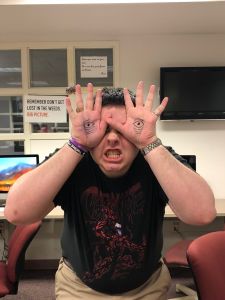
However, my favorite outlet for self-expression is my favorite time of the year: Halloween. The way I see it, Halloween is like “The Purge.” The Purge is described as a night that allows citizens to release all their anger and hate, thus “purifying” their souls. However, Halloween is controlled and doesn’t turn people into real monsters.
Dressing up in costume or wearing makeup allows me to fully immerse myself with the character I’m impersonating. CAP Board’s haunted mansion has also allowed me the perfect opportunity to release the beast in a controlled and reasonable manner by acting like a scary monster or character.
The beauty underneath
While monsters can be grotesque and horrific creatures that inspire nightmares, they are an essential aspect of understanding humanity as well as yourself. Not only are they challenges that we must overcome, but they are representations of what we as humans are capable of and that there’s no such thing as pure good and pure evil. This is a concept I have fully embraced and will hold dear to me for the rest of my life.
Monsters have influenced me in a variety of ways the same way superheroes such as Batman and Spiderman have inspired me to the be the best that I can be. They have played a part in shaping me into who I am today and have opened my mind to a seemingly unlimited amount of ideas and opportunities to improve myself and embrace the fact that I’m human.
If you look beyond the surface and dig deep enough, you will always find a hidden beauty in even the most grotesque of beings.


